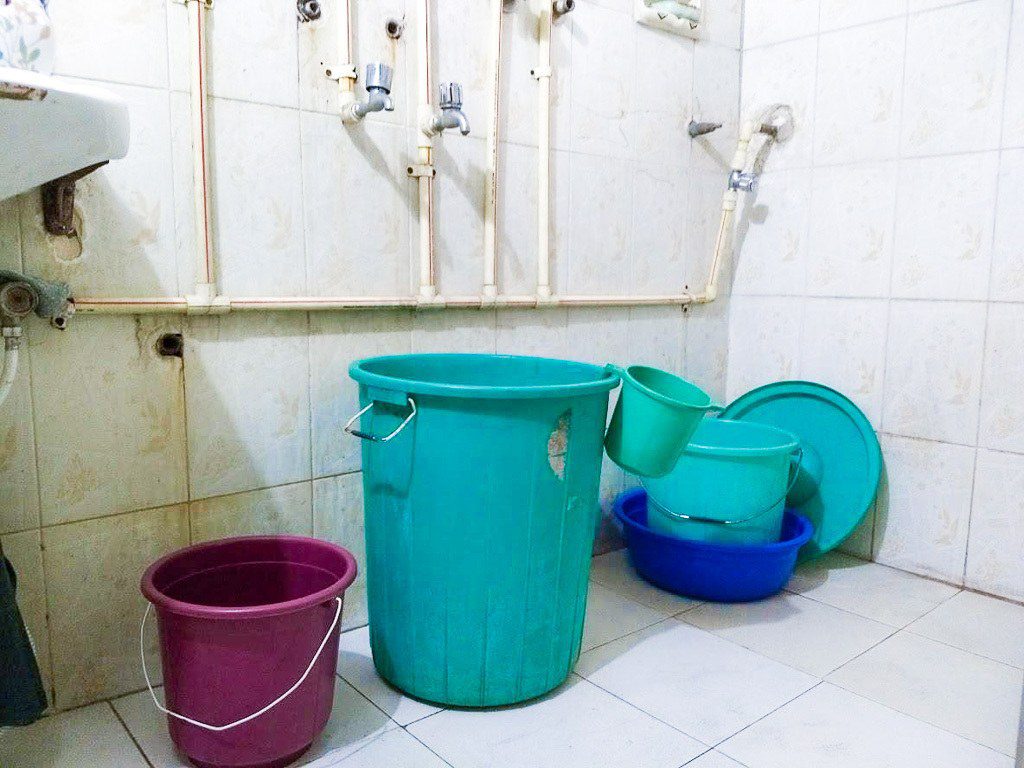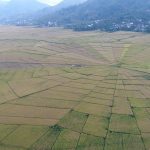Bathing in Indonesia: The Art of the Mandi
Indonesia, a vast archipelago of over 17,000 islands, is a country of contrasts. While its major cities boast modern amenities, a significant portion of its population still resides in rural areas where traditional practices prevail. One such practice that has stood the test of time is the “mandi”, a unique bathing method that reflects Indonesia’s cultural heritage and practical approach to daily life.

Understanding Indonesia’s Context
Indonesia is the world’s fourth most populous country, with over 270 million inhabitants spread across its 17,000+ islands. Despite rapid economic growth in recent decades, it remains a developing nation with a large rural population. This demographic reality has a profound impact on daily life of residents and visitors, including bathing practices.
In rural areas and many urban neighborhoods, access to modern plumbing and consistent water supply can be limited. This scarcity has led to the enduring popularity of the mandi, a bathing method that is both water-efficient and deeply ingrained in Indonesian culture.
Okay – What exactly is a Mandi?
A mandi is a traditional Indonesian way of bathing that involves using a small scoop (gayung) to pour water over oneself from a large container or tub. Or to put simply – a small bucket or scoop in a bigger bucket! The most common one is a medium sized plastic tub that might be mistaken for a garbage can, and floating in it is a small bucket with a handle. The word “mandi” itself means “to bathe” in Indonesian.
Key Components of a Mandi:
- Water Container: Usually a large tub or basin filled with water.
- Gayung: A small plastic or metal scoop used to pour water.
- Squat Toilet: Often located in the same room, utilizing the same water source.
The Mandi Experience
Taking a mandi is a unique experience that differs significantly from Western-style showers. Here’s a step-by-step guide to using a mandi as we do in our house:
- Prepare the Water: Fill the container to about 1/4 full for a complete bath.
- Initial Rinse: Use the gayung to scoop water and pour it over yourself. A few splashes to the face and back are usually enough to wake you up.
- Soap and Scrub: Stand away from the water container while soaping to keep the water clean.
- Rinse Off: Use the gayung to pour water over yourself, rinsing off all soap. Start with your hands and then rinse the rest of your body.
- Finish Up: Continue pouring water until you feel clean and refreshed.
Benefits of Using a Mandi
While the mandi might seem primitive to those accustomed to modern showers, it offers several advantages:
Water Conservation
One of the most significant benefits of the mandi is its water efficiency. A typical shower in the West can use up to 65 liters of water in just 8 minutes. In contrast, a mandi typically uses only 15-20 liters for a complete bath. This conservation is crucial in a country where water scarcity is a pressing issue, especially in rural areas.
Cultural Connection
The mandi is more than just a way to get clean; it’s a cultural practice that connects Indonesians to their heritage. Participating in this traditional bathing method can provide a deeper understanding and appreciation of Indonesian culture.
Adaptability
The mandi system is highly adaptable to various living conditions. It can be set up in areas without running water, making it an essential solution for rural communities and during natural disasters when water infrastructure might be compromised.
Cost-Effective
Implementing a mandi system is significantly less expensive than installing modern plumbing. This makes it an accessible option for a large portion of Indonesia’s population, particularly in rural areas where resources may be limited.
Refreshing Experience
Many Indonesians find the mandi to be a refreshing and invigorating experience, especially in the country’s hot and humid climate. The cool water can provide relief from the heat and help start the day on an energetic note.
Challenges and Adaptations
While the mandi has many benefits, it’s not without its challenges, especially for those not accustomed to this bathing method:
Temperature Adjustment
For many visitors and expats, adjusting to the cold water can be difficult. In most Indonesian homes, especially in rural areas, hot water is not available. However, many find that the initial shock of cold water becomes more tolerable and even refreshing over time. Note that “cold” in this context is just nighttime temperatures…so it might be 15-20c. Not really cold…not icy.
Learning Curve
Using a gayung effectively requires some practice. It’s common for newcomers to struggle with rinsing off soap or shampoo efficiently. However, with time, most people develop the necessary skills and even come to appreciate the method’s simplicity.
Limited Privacy
In some rural homes, the mandi area might not offer the level of privacy that Westerners are accustomed to. This can be a significant adjustment for some visitors.
The Mandi in Modern Indonesia
As Indonesia continues to develop, the role of the mandi is evolving. In major cities and more affluent areas, Western-style showers are becoming more common. However, the mandi remains prevalent in many parts of the country:
Urban Areas
Even in cities, many apartments and homes still feature mandi-style bathrooms. Some urban dwellers prefer this method for its water efficiency and cultural significance.
Rural Regions
In rural areas, the mandi continues to be the primary bathing method due to its practicality and the limited infrastructure for modern plumbing.
Hotels and Tourism
While most hotels catering to international tourists offer Western-style showers, some eco-lodges and cultural homestays provide mandi facilities to offer visitors an authentic Indonesian experience. In many of our adventures and remoter trips, there is only a mandi.
Environmental Impact
The water-saving aspect of the mandi has significant environmental implications. As Indonesia faces challenges related to water scarcity and pollution, the mandi’s efficiency becomes increasingly relevant. By using less water, this traditional method helps conserve a precious resource and reduces the strain on water treatment facilities.
Cultural Significance
The mandi is more than just a practical solution; it’s a part of Indonesia’s cultural fabric. Many Indonesians view the act of taking a mandi as a ritual that prepares them for the day ahead or cleanses them before important events. This cultural significance ensures that the mandi will likely remain a part of Indonesian life for generations to come, even as the country modernizes.
Indonesian Bucket showers are great!
The mandi exemplifies how traditional practices can offer practical solutions in a developing country context. It addresses the challenges of limited water resources and infrastructure while providing an efficient and refreshing bathing experience. As Indonesia continues to develop, the mandi serves as a reminder of the country’s ingenuity in adapting to its unique geographical and economic circumstances.
For visitors to Indonesia, experiencing a mandi can be more than just a novel way to bathe; it’s an
Introduction: Beyond the Beach Paradigm
While Bali’s beaches are undeniably beautiful, they represent just a fraction of what the island has to offer. The true essence of Bali lies in its diverse natural landscapes, from verdant rice paddies and dense rainforests to majestic waterfalls and towering volcanic peaks. By challenging the common perception of Bali as merely a beach destination, our trekking tours invite you to discover the island’s hidden treasures and connect with its rich cultural heritage.
Bali Beyond the ordinary – Walking and trekking tours
Our Bali trekking tours take you through some of Bali’s most scenic and serene landscapes, offering a chance to immerse yourself in the island’s natural beauty. Here are some highlights:
- Rainforest Treks: Explore the lush jungles of Bali, where towering trees and vibrant flora create a breathtaking backdrop for your adventure. These treks offer a peaceful escape from the hustle and bustle of tourist hotspots, allowing you to reconnect with nature in a tranquil setting.
- Waterfall Excursions: Discover the island’s stunning waterfalls, tucked away in hidden valleys and surrounded by lush vegetation. The sound of cascading water and the cool mist provide a refreshing respite from the tropical heat.
- Rice Paddy Walks: Stroll through Bali’s iconic rice terraces, where emerald-green fields stretch as far as the eye can see. These walks offer a glimpse into the island’s agricultural heritage and the traditional Subak irrigation system that sustains it.




